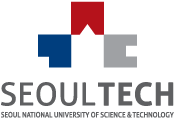
Tel : +82-2-970-6114,7114 Fax : +82-2-970-6088
| Title | Professor Insoo Ro’s research on recycling rare metal catalysts published in Nature | ||||
|---|---|---|---|---|---|
| Writer | SEOULTECH | ReadCount | 4681 | Date | 2022-10-30 |
| Files |
|
||||
|
- High-activity, non-homogeneous catalysts developed, able to replace existing uniform catalysts harmful to the environment and difficult to recycle - Used in alkene hydroformylation reaction in the production of aldehyde, one of the most prevalent processes in the chemical industry
▲The ethylene hydroformylation bifunctional reaction mechanism of rhodium-tungsten monatomic pair site catalysts
Alkene hydroformylation reaction is one of the most prevalent processes in the chemical industry. Involving the conversion of ethylene, carbon monoxide, and hydrogen into aldehyde, it is widespread throughout the chemical industry, including in the development of pharmaceuticals and lubricants. Twelve million tons of aldehyde are produced worldwide annually. The reaction mainly uses a homogeneous catalyst containing rhodium. Homogeneous catalysts cannot be recycled and generate significant wastewater.
The newly developed catalyst is recyclable, is no different from the existing catalyst in terms of reaction activity, and demonstrates a high selectivity rate of 96 percent, referring to its capacity to generate only specific reactions. This is the highest rate among non-homogeneous catalysts developed so far. Tungsten was added to the existing homogeneous catalyst that used rhodium metal in order to improve reaction activity and reduce wastewater generation.
The research findings are expected to pave the way for easier and less costly production of aldehyde, a key raw material in the chemical industry.
|
|||||
